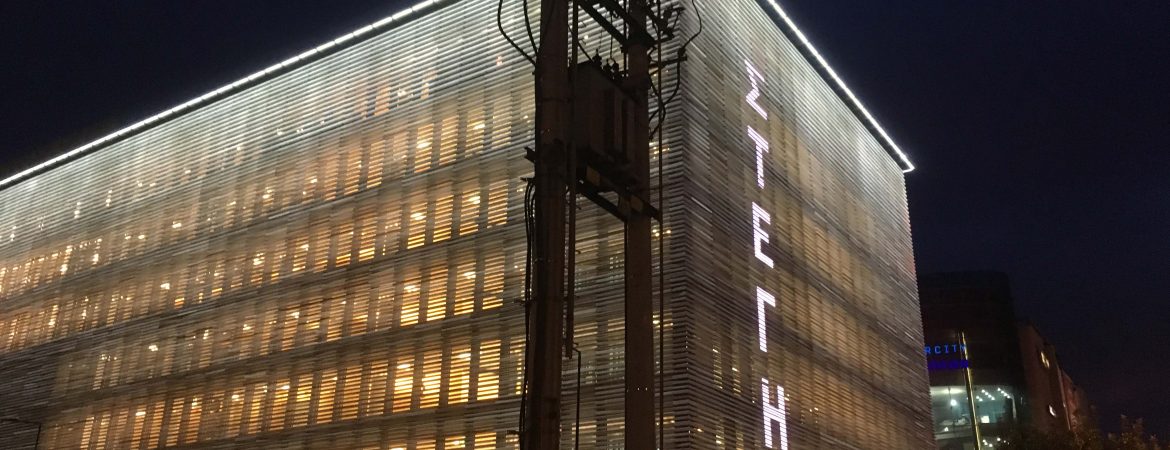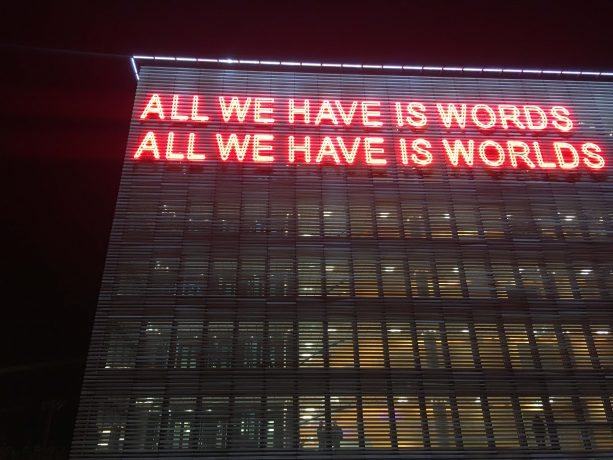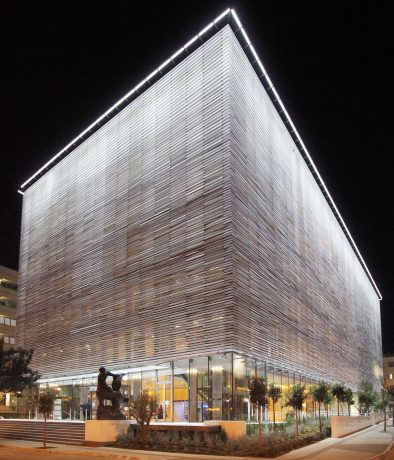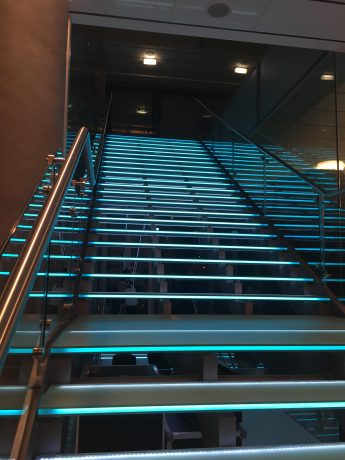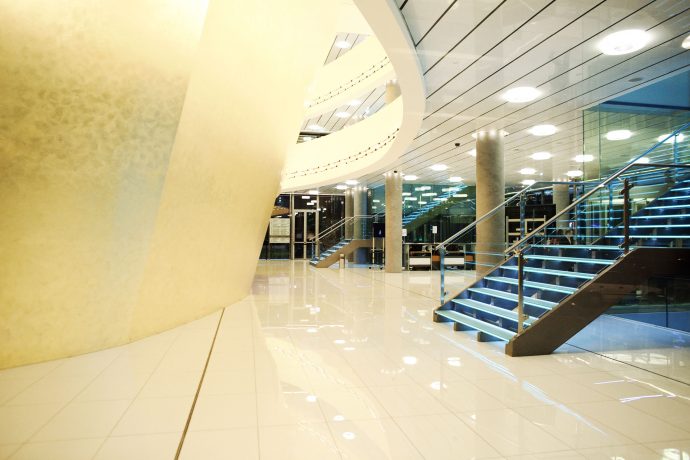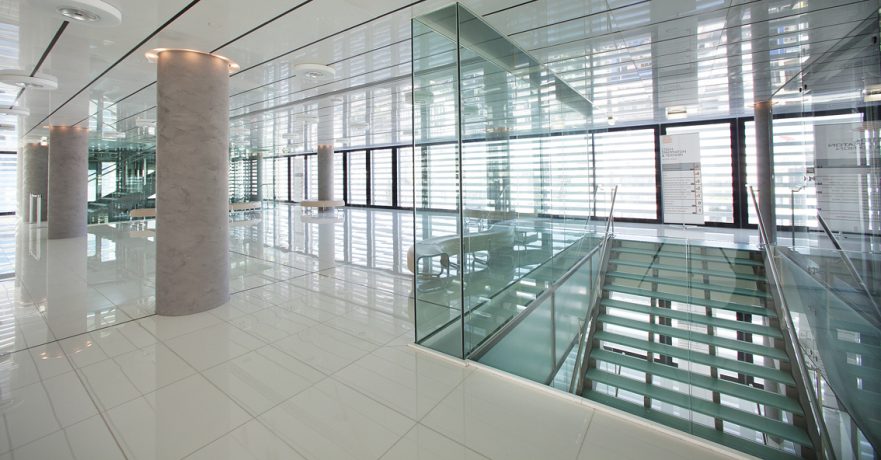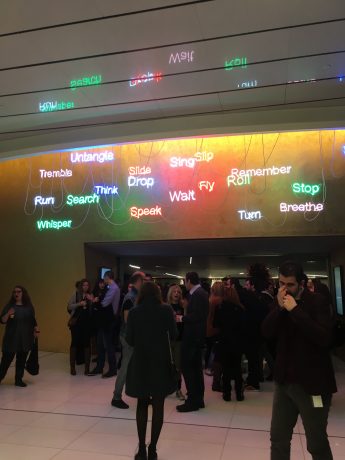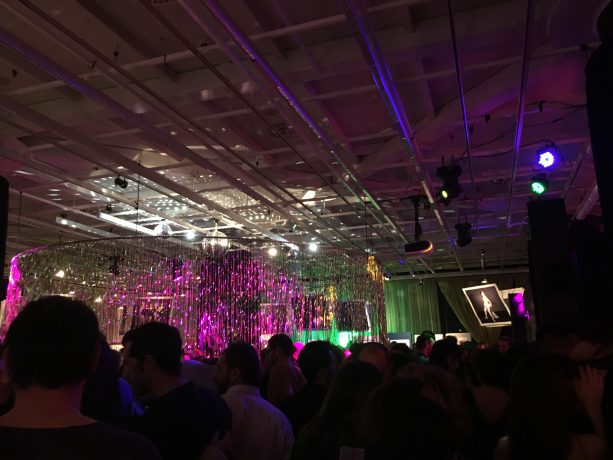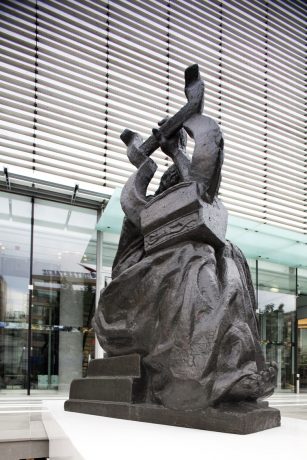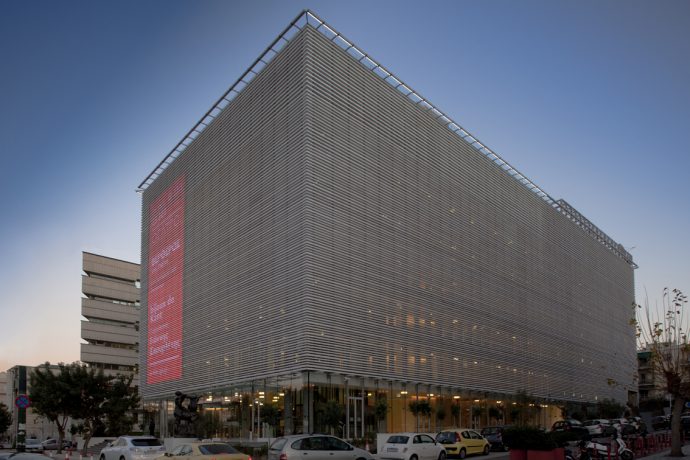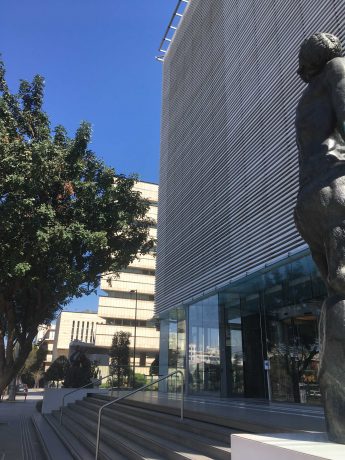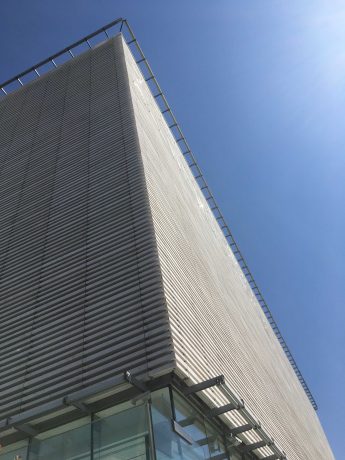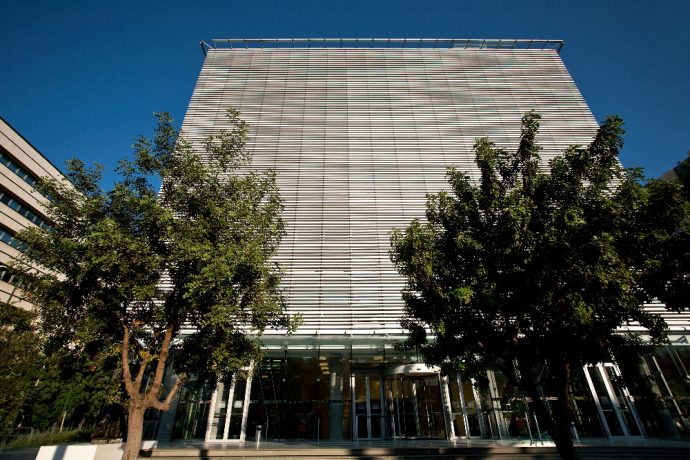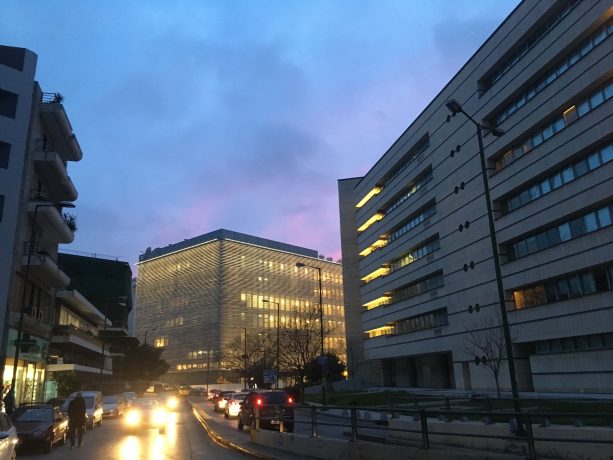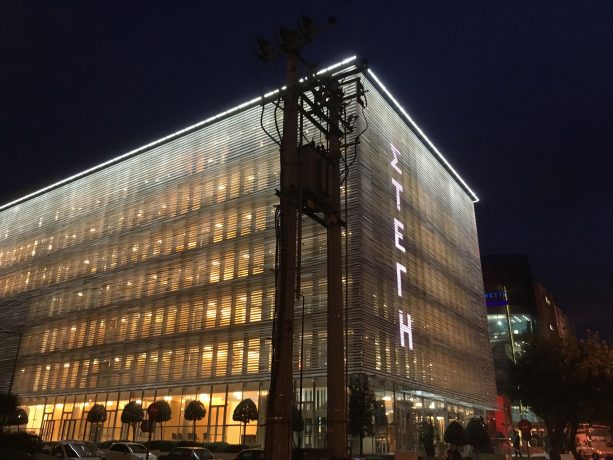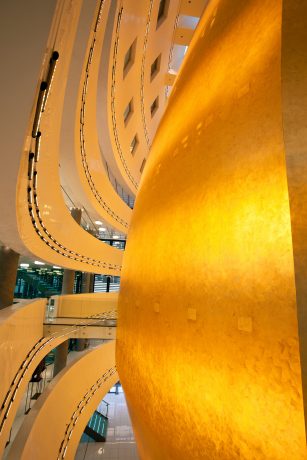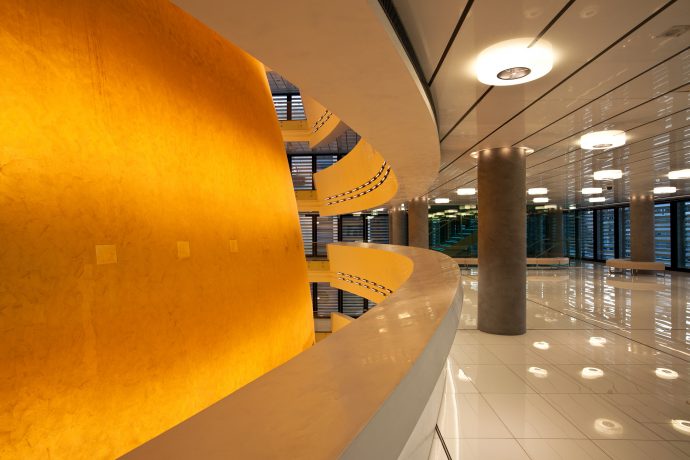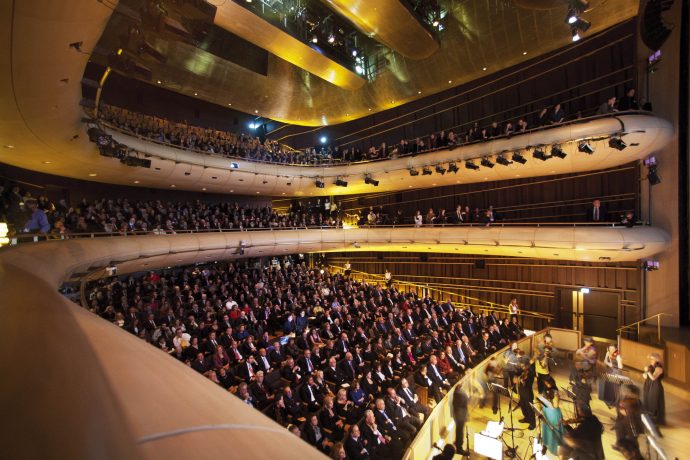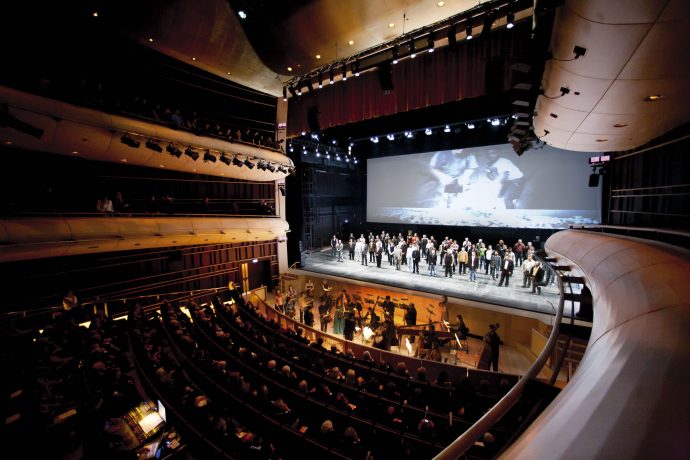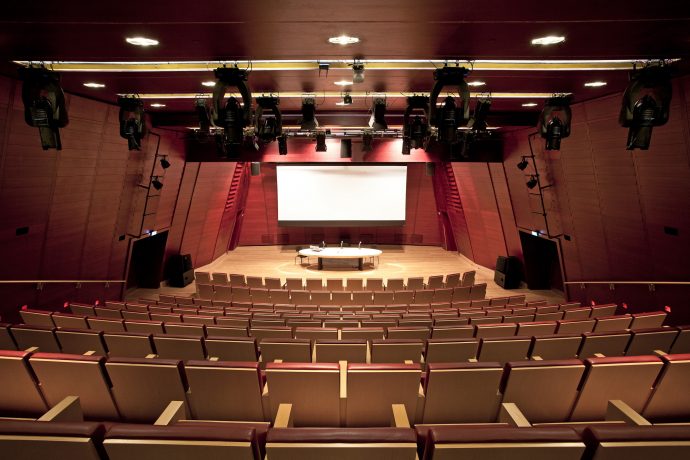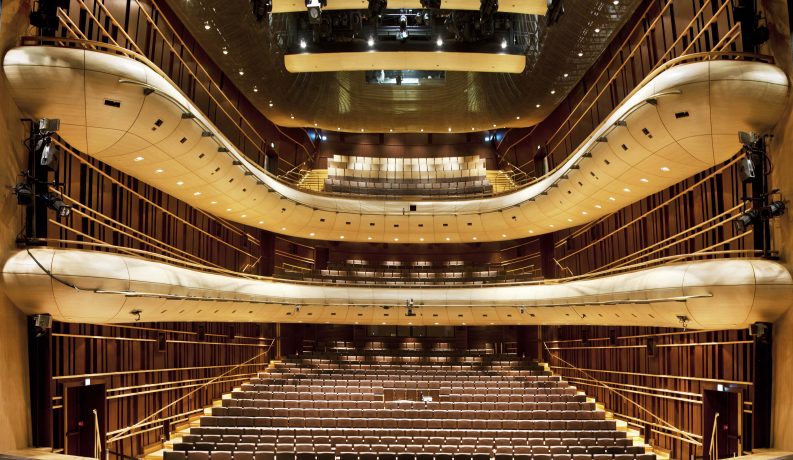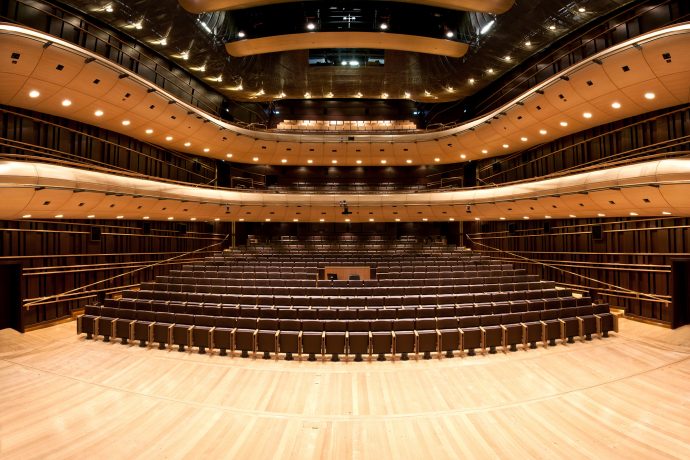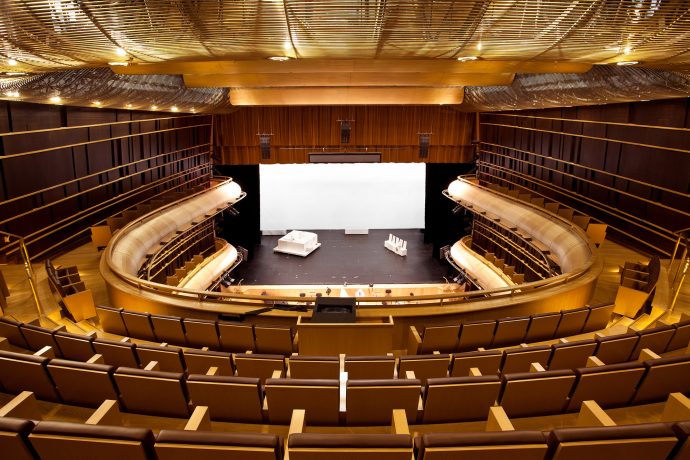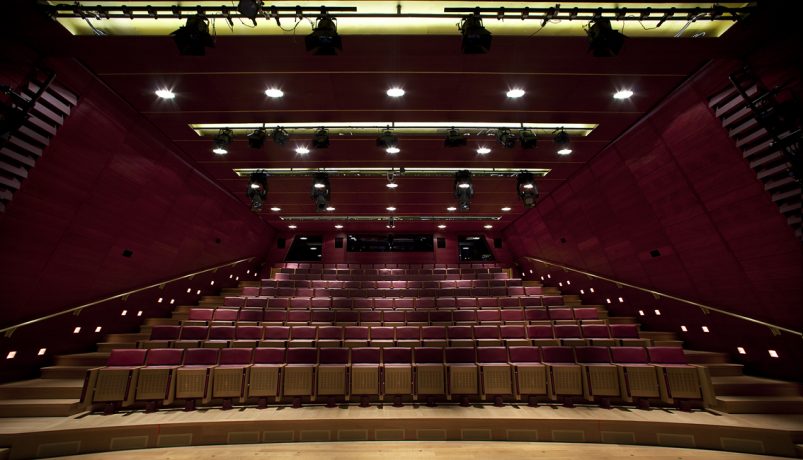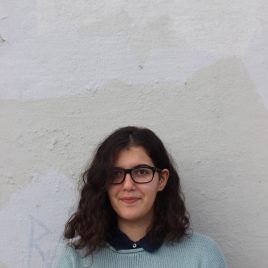The Onassis Cultural Center (OCC) or Stegi (which means “roof” in Greek) is the ultimate destination in Athens for lovers of alternative and experimental art both in the world of performance and theatre and the world of exhibitions. It was inaugurated in December 2010 and created by the Onassis Foundation to promote modern cultural expression.
The OCC, in general, has broaden the minds of the Athenian art enthusiasts. Since 2010, it has changed the artistic landscape with its events; the OCC organizes lectures and speeches about art, science, literature and politics among others. Also, it houses various festivals focusing on youth, on dance or on cinema. Among the most prolific events include collaborations like Robert Wilson, Paul Auster, Guerilla Girls, Brian Eno, Marjane Satrapi, the Barbican, Michail Marmarinos and Constantinos Daskalakis. Its exhibitions are supported by parallel events like lectures, escape rooms, educational programs and parties (it already had an eighties night and a pajama party).
The OCC is located near the center of Athens in Syngrou Avenue opposite Panteion University. When it was built, it was in line with the new Museum of the Acropolis; now, it is also a distant neighbor to the Stavros Niarchos Foundation Cultural Center (SNFCC) and the National Museum of Contemporary Art (EMST).
In need of a new building, the Onassis Foundation chose the French architectural practice “Architecture Studio” to design it after holding an international architecture competition. The construction began in 2000.
The building, featuring a white rectangular outer layer, is spectacular. With the use of small bands, the inside is designed to be visible from the outside. However, this construction in not always transparent. During the day, it allows the light to go inside and during the night it glows by the inside lighting. Its exterior makes it a fine example of contemporary architecture in Athens; it should be noted that the exterior is used as surface to project art or the logos of the current exhibitions, the restaurant and the center. Outside, the structure is surrounded by a small garden of Mediterranean plants.
The building has seven floors and nine underground levels featuring two amphitheaters, one exhibition hall over 600 sq. m., an open-air theatre, a restaurant on the top level with an open-air section during summery months (Hytra), a bar in the ground floor and an underground parking space. The main stage, called the Aristotle Onassis, can hosts about 880 people while the Christina Onassis can host about 220; both were designed by architect Mark Foley. The theatrical lighting was assigned to James Morse from the London-based Light & Design Associates Company and lighting for the entire building was redesigned by Eleftheria Deko & Associates. The ground-floor bar was redesigned by renowned artist Aemilia Papafilippou.
The building is plain, but quite playful due to its minimal aesthetics that make it a building that stands out. The innovation of the center is captured in the building. The OCC is open every day from morning to night with activities accessible to all. Its range of events and its approach to art has established it as one of the biggest institutions in Athens.
